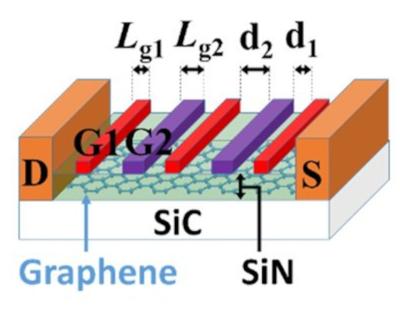Researchers from Japan's Tohoku University and RIKEN have successfully detected terahertz waves with fast response and high sensitivity at room temperature.
On the electromagnetic spectrum, which comprises everything from radio waves to X-rays and gamma rays, there is a deadzone where conventional electronic devices can hardly operate. This deadzone is occupied by terahertz waves. With wavelengths of approximately 10 micrometers to 1 millimeter, terahertz waves are unique amongst electromagnetic waves. Their vibration frequency overlaps with the molecules that make up matter, and they allow for the detection of substances, since almost every molecule operating in the terahertz band has a fingerprint spectrum. Technologies capable of harnessing the power of terahertz waves could have massive significance for the development of spectroscopy, imaging, and 6G and 7G technologies.
Terahertz waves' unique properties make it difficult to achieve fast-response and high-sensitivity terahertz wave detectors capable of operating at room temperature. Photothermoelectric detection, which utilizes the electromotive voltage effect generated by the spatial thermodiffusion of electrons and holes heated by the absorption of electromagnetic waves, is also known for being able to quickly and sensibly detect terahertz waves. However, current photothermoelectric detectors have a complex bipolar structure, requiring the two electrodes in the detector to be made out of different materials. This makes it challenging to achieve both high performance and mass production.
The group's success was accomplished thanks to a new principle that enabled the detection operation even within the simplest transistor device. "We used a unipolar type transistor with graphene where only electrons were involved," said Associate Professor Akira Satou, from Tohoku University's Research Institute of Electrical Communication (RIEC). "Additionally, the same type of metals can be employed for all electrodes."
Looking ahead, Satou and his team plan to build upon their achievement by improving the device performance.
